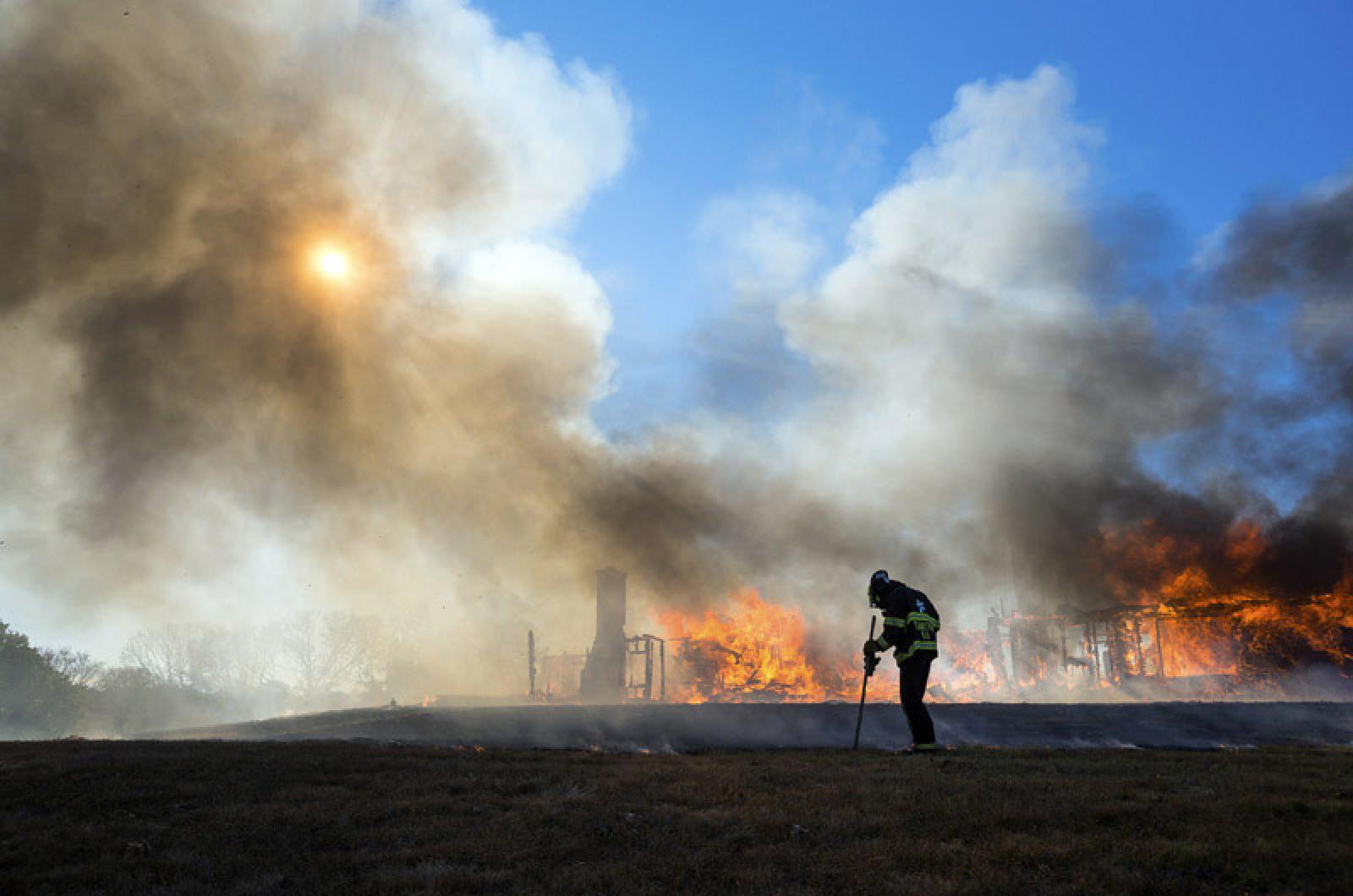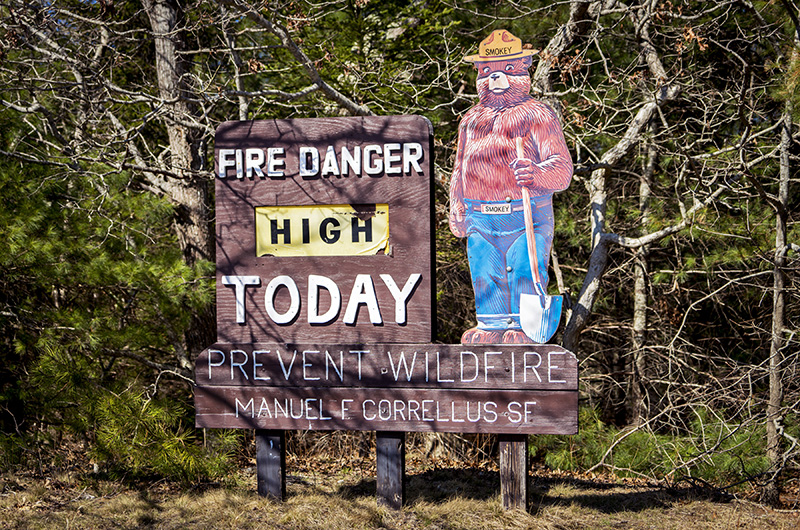Recent catastrophic wildfires in California have sown concern on Martha’s Vineyard, where there is concern the 5,000-acre Manuel F. Correllus State Forest is becoming a tinder box that could overwhelm local firefighters and threaten homes if fire breaks out.
“Once it starts, we don’t have the equipment on the Island, in any town, to fight a brush fire, and you don’t have any equipment — brush trucks — here to fight a fire,” West Tisbury fire chief Manny Estrella told state forestry and fire officials, who met with West Tisbury selectmen Wednesday afternoon before taking part in an educational forum the Martha’s Vineyard Hebrew Center in Vineyard Haven that evening.
The forum drew about 70 people.
“Every class that we’ve ever taken on brush fires [says] we need at least six brush trucks, and on this Island we really only have two brush trucks,” Mr. Estrella said. “It puts us in a bad situation.”
State forest superintendent Chris Bruno told the selectmen that by partnering with Island conservation groups, he has been able to enlist the help of hikers, bikers and horseback riders to mow and clear overgrown trails, trails and parking lots.
“It’s a work in progress,” Mr. Bruno said. “We think we’re going in the right direction and we’ve got a really good momentum.”
Deeper into the woods, the danger of fire is heightened by the fact that some parts of the state forest haven’t burned in 65 to 80 years, said Dave Celino, chief fire warden for the state Department of Conservation and Recreation’s Bureau of Forest Fire and Forestry.
“The Vineyard is a classic example of a fire-dependent ecosystem. It wants to burn,” Mr. Celino said.
With seven to 10 tons of fuel — flammable scrub oak, huckleberry and blueberry — per acre, the state forest “is going to burn one way or another,” said Mr. Celino.
“We would rather have it burn on our terms, under managed circumstances,” through prescribed burns conducted on days when wind is unlikely to whip flames out of control,” he said. He continued:
“What scares me as a state fire supervisor is getting a fire started in one of these subdivisions that’s driven by a wind,” Mr. Celino said.
A number of residential subdivisions in Edgartown and West Tisbury border the state forest.
“There’s a different fuel type there, and it’s called homes,” Mr. Celino said.
Residents of some of those homes, along with Island fire chiefs and other first responders, turned out for Wednesday evening’s forum at the Hebrew Center, where Mr. Celino was among several speakers on fire safety and preparedness.
“We live in a land that has always depended on fire to maintain the proper habitat,” said JoAnn Taylor, a coastal planner for the Martha’s Vineyard Commission who spoke at the forum.
“We are not immune to having a bad wildfire,” a risk heightened by changes in climate that now deliver summer rain in heavy storms dispersed between short-term droughts, Ms. Taylor told the audience.
“We’ve lost our gentle summer rain,” she said. Showing slides of Cuttyhunk’s wildfire management plan, Ms. Taylor said she is applying for a federal grant that would pay 75 per cent of the cost to put a similar plan into practice on the Vineyard.
Josh Nigro, the state’s district fire warden for Martha’s Vineyard, urged homeowners and residents to heed Smokey Bear’s message that most fires can be prevented.
Uncluttered roofs, open space instead of vegetation near buildings, driveway space for fire trucks and a long garden hose always attached are among the ways people can stiffen their homes’ resistance to fire damage.
Putting these precautions into practice, three communities in Dukes County have joined the National Firewise Communities Program: Hopp’s Farm and Nat’s Farm in West Tisbury, and Cuttyhunk, Mr. Nigro said.
The program also provides individual residents with free assessments of their home’s fire safety by state fire officials like Mr. Nigro.
“We need to think of the Vineyard as a fire-adapted community,” he said.
The Hebrew Center forum began with a detailed presentation by registered nurse and public health expert Barbara Sattler, a professor at the University of San Francisco who also owns a winery in Sonoma County, on preparing to evacuate from a fire.
“Get involved with your neighbors — not just neighborhood groups,” she said.
“Resiliency happens when you work together.”







Comments (2)
Comments
Comment policy »